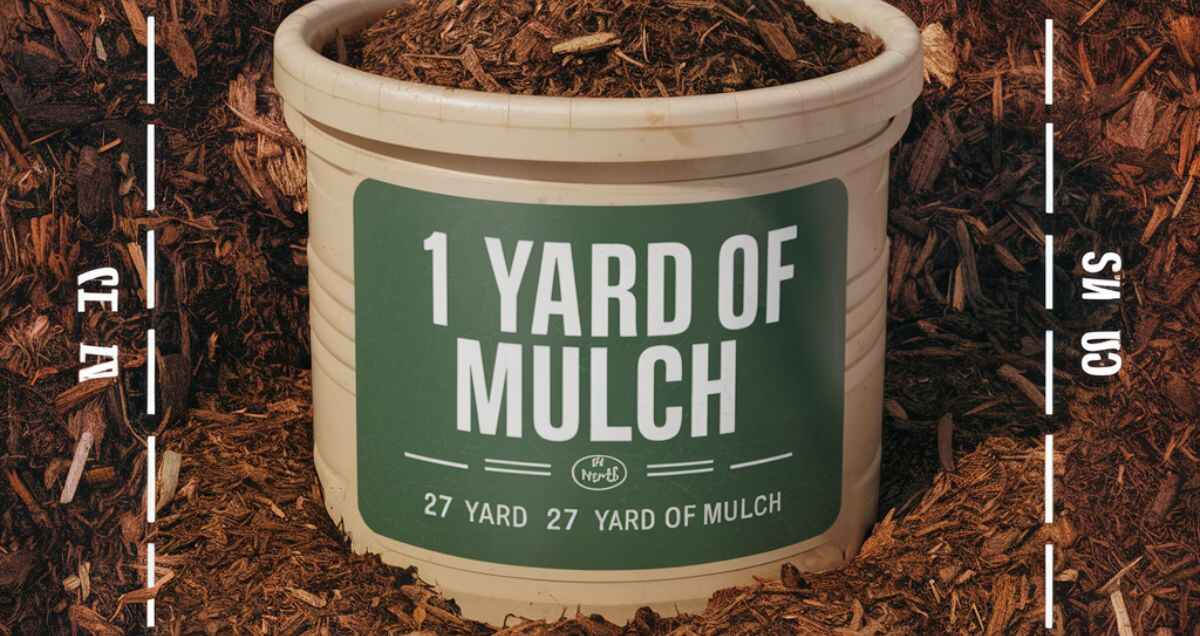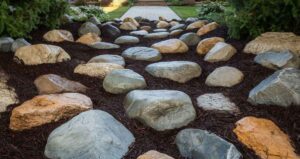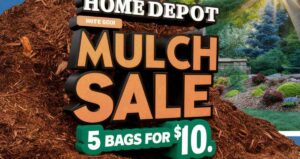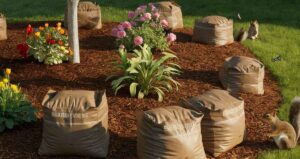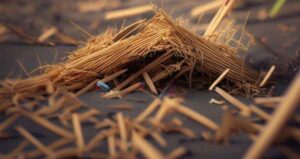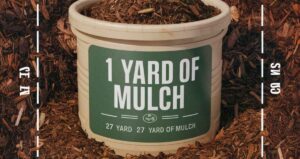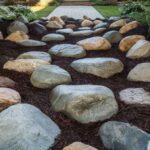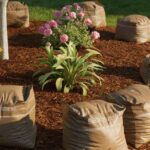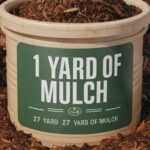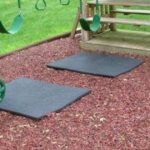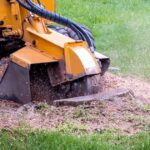Mulch, including how many cubic feet In a yard of mulch, is a covering applied to soil surfaces, made of organic or inorganic materials, to conserve moisture, inhibit weed growth, and regulate soil temperature, promoting healthy plant growth and soil vitality.
Are you tired of battling weeds and struggling to maintain soil moisture in your garden? A solution that not only elevates your gardens visual appeal but also nurtures plant vitality while minimizing upkeep. Enter mulch the unsung hero of gardening and landscaping.
This article will discuss these topics: explaining cubic feet and yards, conversion formula: cubic feet to yards, standard measurements of mulch, and estimating mulch quantity.
Explaining Cubic Feet And Yards
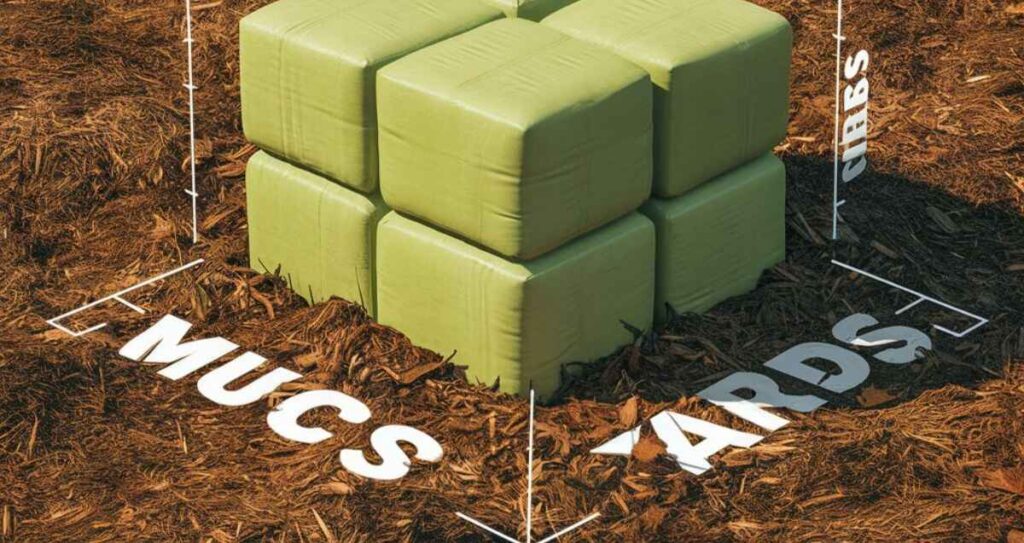
Imagine measuring the space a box takes up. That’s cubic feet! It tells you the volume of 3D objects. A yard, on the other hand, measures length, but when it comes to volume, a “cubic yard” resembles a big cube, with 3 feet on each side. This distinction becomes significant when calculating the amount of material, such as soil, required for a project. Understanding this difference is crucial for accurately estimating the volume needed and ensuring the success of your landscaping endeavors.
Read this Blog: Mulch On Sale Near Me
Knowing cubic feet and yards helps you plan and do things better. Whether you’re fixing up your room or helping with yard work, figuring out volumes is important. These units are used in building, landscaping, and anywhere you need to measure the amount of space something takes up. Understanding them lets you plan effectively, use materials wisely, and get the results you want.
Conversion Formula: Cubic Feet to Yards
Converting cubic feet to yards is simple. Divide the number of cubic feet by 27. This is because a cubic yard is 3 feet x 3 feet x 3 feet, which equals 27 cubic feet. Gardeners use this formula to determine how much mulch they need for their projects.
This conversion is crucial for any gardener. It empowers you to buy the right amount of mulch, whether you’re working on flower beds, borders, or larger projects. With this knowledge, you can confidently tackle your gardening endeavors, ensuring optimal coverage and promoting healthy soil in your outdoor space.
Standard Measurements of Mulch
Mulch comes in standardized sizes: bags (1.5 to 3 cubic feet) or bulk (sold by the cubic yard). Understanding these measurements is crucial for smart mulch shopping. Whether you’re mulching a small bed or a large project, knowing these sizes ensures you buy the right amount.
Also read this Blog: What To Put Under Rubber Mulch For Playground?
Packaging Size Volume (Cubic Feet)
Bagged Mulch (small) 1.5 – 2
Bagged Mulch (large) 2 – 3
Bulk Mulch Varied, typically sold by the cubic yard
Estimating Mulch Quantity
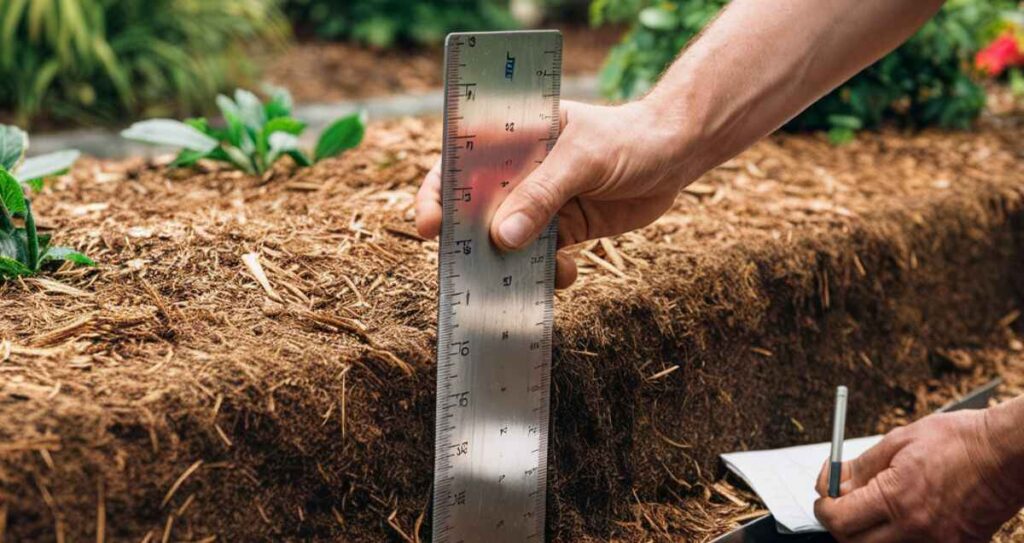
Estimating the quantity of Mulch Indeeded for your project requires considering several factors, including the area to be covered and the desired thickness of the mulch layer. Here’s a simple method to calculate the amount of mulch required:
- Measure the Area: Determine the square footage of the area to be mulched by multiplying the length by the width.
- Determine the Depth: Decide on the desired thickness of the mulch layer, typically between 2 to 4 inches.
- Calculate Volume: Use the formula: Volume = Area × Depth (in feet).
- Utilize the conversion formula: Divide the total cubic feet by 27 to determine the volume in cubic yards. This straightforward calculation ensures accurate measurements when purchasing mulch for your gardening or landscaping projects.
Remember to overestimate slightly to ensure full coverage and account for any settling over time.
Frequently Asked Questions
How many 2 cu ft bags of mulch are in a yard?
There are 13.5 bags of 2 cubic feet of mulch in a yard. The calculation is based on the fact that 1 cubic yard equals 27 cubic feet. Therefore, dividing 27 by 2 gives us 13.5 bags. This simple conversion allows gardeners to determine the number of 2 cubic feet bags needed for their mulching projects accurately.
How far does 1 yard of mulch cover?
One yard of mulch covers an area of 100 square feet with a depth of 3 inches. This is a common recommendation for optimal mulch coverage in gardens and landscaping projects.
What is 1 cubic yard of mulch?
One cubic yard of mulch is equivalent to 27 cubic feet. It represents the volume of mulch needed to cover an area of 3 feet by 3 feet by 3 feet.
How to calculate mulch in cubic feet?
To calculate mulch in cubic feet, multiply the area to be covered (in square feet) by the desired depth of mulch layer (in feet). This will give you the volume of mulch needed in cubic feet.
How to calculate yards of mulch?
To calculate yards of mulch, divide the total volume of mulch (in cubic feet) by 27. This conversion accounts for the fact that 1 cubic yard equals 27 cubic feet.
How much volume is a yard of mulch?
A yard of mulch is equivalent to 27 cubic feet. This volume represents the amount of mulch needed to cover an area of 3 feet by 3 feet by 3 feet.
What is the formula for the mulch calculator?
The formula for a mulch calculator is Mulch Volume (cubic feet) = Area to be Covered (square feet) × Depth of Mulch (feet). To convert cubic feet to cubic yards, use the formula: Cubic Yards = Cubic Feet ÷ 27.
Conclusion
The link between cubic feet and yards of mulch is crucial for successful gardening and landscaping projects, ensuring accurate estimation and efficient planning. By grasping the conversion between these measurements and employing the appropriate formulas, gardeners can accurately estimate the volume of mulch needed, ensuring optimal coverage and soil health.
Armed with this knowledge, individuals can confidently purchase the right amount of mulch, minimizing waste and unnecessary expenses. Mastering mulch volume measurements empowers garden enthusiasts to efficiently plan and execute their landscaping endeavors, creating vibrant and thriving outdoor spaces to enjoy for years to come.
